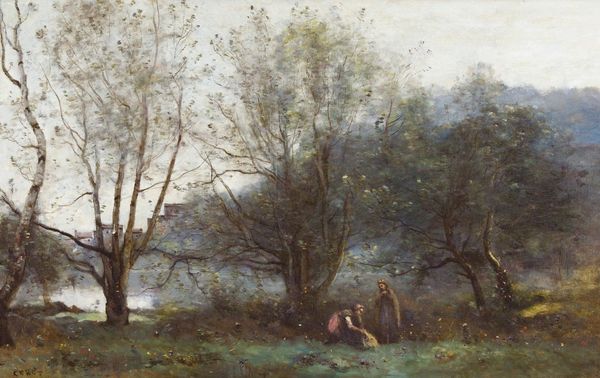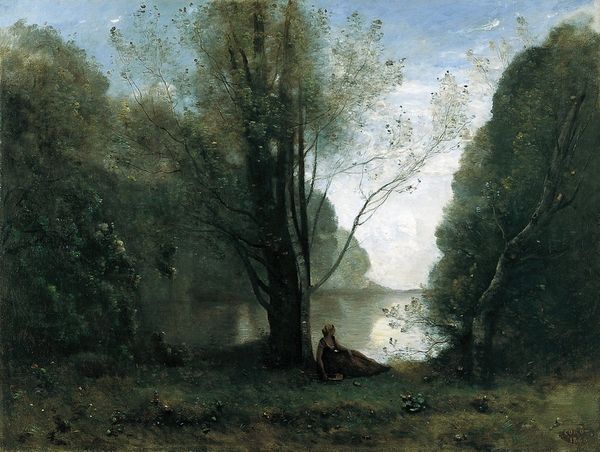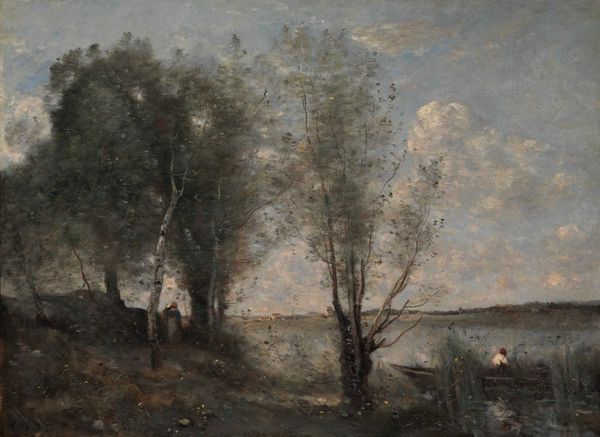
Copyright: Public Domain: Artvee
Camille Corot likely painted 'Dance under the Trees at the Edge of the Lake' in the mid-19th century, an era marked by significant social change. Corot's artistic output developed during the transition from Romanticism to Realism, and the painting reflects the changing status of women, particularly within the middle classes. While industrialization offered new opportunities, societal expectations for women remained constrained. The women depicted are taking a break from those expectations and embracing a space of leisure and communion. The piece exudes an emotional tranquility. The women dancing and reposing hint at the delicate balance between freedom and restriction experienced by women in 19th-century society. There’s a sense of idealized femininity, where women find solace and strength in nature. Corot’s work both reinforces traditional representations and provides glimpses into alternative narratives. The dance becomes a subtle form of resistance, a celebration of female solidarity.
Comments
No comments
Be the first to comment and join the conversation on the ultimate creative platform.













